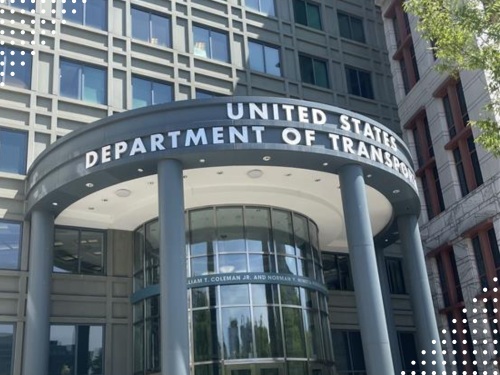A protected bicycle lane study conducted by the Insurance Institute for Highway Safety finds that while bike lanes separated from the roadway by physical barriers improves safety for riders, the risk of injury varies widely depending on the type of bike lane involved.
[Above photo by DDOT.]
The IIHS study – conducted in collaboration with George Washington University, Oregon Health and Science University, and New York University – used what is known as a “case-crossover design” to look at the risks associated with different types of cycling infrastructure, including protected bike lanes.
A total of 604 bicycling adults involved in crashes or falls were included in the study, IIHS said, and a crash or fall didn’t have to involve a vehicle to be included in the study – and only about half did. Most of the injuries in the study were minor, with no fatalities, the institute noted.

Some of the study’s findings include:
- Compared with a major road with no bike infrastructure, the risk of a crash or fall was much lower on two-way protected bike lanes on bridges or on protected lanes raised from the roadway.
- The types of bicyclist crashes seen in street-level protected lanes weren’t the type that are typically most severe. Most fatal bicyclist crashes involving motor vehicles occur midblock, while cyclists using two-way protected bike lanes in the study collided with vehicles most often at intersections or junctions with driveways and alleys. In such cases, vehicles are usually turning and, as a result, are traveling slowly.
- Certain road features were associated with elevated risk of bicyclist crashes and injuries. They included streetcar or train tracks, downhill grades, and temporary obstacles caused by construction or parked cars.
Jessica Cicchino, IIHS vice president for research and the lead author of the group’s new paper, noted in a statement that this research provides “evidence that protected bike lanes help prevent the worst crashes.” However, she also stressed the IIHS study shows that certain locations are “better than others” for protected bike lane infrastructure.
“Typically, protected lanes are installed on busy roads that pose more of a risk to cyclists in the first place,” Cicchino pointed out. “Our finding that conventional bike lanes were less risky doesn’t mean that cyclists on roads with protected lanes would be better off without that [physical] separation.”
For example, she said intersections and junctions at a two-way bike lane can be particularly challenging for vehicles making turns as drivers need to look for oncoming traffic as they turn, as well as looking in both directions for bicyclists.
The IIHS study also suggests that protected bike lanes with physical barriers should be located where there are fewer junctions, if possible, or to consider raised cycle crossings, which have been found to improve safety on protected bike lanes in Europe. The paper also suggests measures be taken to prevent pedestrians from entering bike lanes, which creates higher crash risk.
“Pedestrians also sometimes enter street-level bike lanes, which can cause cyclists to swerve and fall,” Cicchino noted. “And a cyclist on a protected lane at street level is likely to encounter vehicles at intersections, driveways and alleys more often than on a protected lane enclosed within a bridge or greenway.”
 Top Stories
Top Stories
USDOT Makes $1.5B Worth of BUILD Grants Available
December 19, 2025 Top Stories
Top Stories

